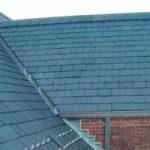
Connecting it all: Role of joints as a primary component
November 16, 2023
It is within the building enclosure, the exterior skin, where joints are found—one of the primary components responsible for facilitating these dynamic interactions. Joints allow buildings to stand firm as much as they allow them to operate responsively to ever-changing internal and external conditions, enabling the flexing, sweating, or breathing of the enclosure skin, as required.